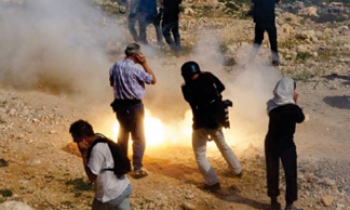EVERYONE WANTED a miracle, from the families of the trapped miners, to the mine company owners, to cable TV. When this miracle turned into a disaster, newspapers paid the price.
It is hard to read the cruelly incorrect stories from Sago, W. Va., that were published in many Wednesday morning newspapers, including some early editions of the Globe, and not entertain grim thoughts about the challenge faced by print media.
The old journalistic adage, get it first but first get it right, is both an albatross and a savior for modern newspapers. The struggle to keep up with the rush to news makes contemplative journalism a marketer's nightmare. On the other hand, mistakes, no matter how honestly made, hurt the old-line print media more than they hurt cable TV or online journalism.
The new media can correct course in real time. The old media's mistakes are cruel jokes and collector's items that greatly undercut credibility.
As we all know, cable television offers dramatic, second-by-second coverage of a disaster of this sort; when cable runs out of live images, because rescue crews are deep underground and out of camera range, the shows fill up air time with speculation and hypothetical scenarios that shape an impression of what might happen; what actually is happening is tangential to the cable TV plot.
Tuesday night's cable TV storyline was simple: One dead miner was discovered. Could the 12 remaining miners somehow be alive? Waiting to learn the actual news, and then reporting the ultimate truth, confirmed beyond a doubt, are not options for cable TV.
Neither is objectivity. The 24/7 cable news anchors and reporters quickly become adopted members of the worried, grieving families. The cable TV news crew is actively and ardently hoping, wishing and praying for the same miracle as the family members of the trapped miners. They rejoice in every sign of hope and grow melancholy when an unhappy ending seems probable. They are cheerleaders or professional mourners, depending on the latest development. They never pretend to be objective observers.
On Fox News yesterday, Geraldo Rivera replayed the moment when crazed-with-happiness family members told him, ''They're all alive!" ''Who told you?" Rivera shouted back, bursting with as much joy as his news subjects. ''They just announced it," a woman yelled ecstatically. At that moment, it takes self-discipline to enforce classic methods of confirming information.
Three hours later, the story took an official and terrible turn for the worse. Eleven of 12 miners were dead. Jubilation turned to despair.
From the start, was the miracle based on assumptions that needed a different kind of confirmation than they received? Greg Mitchell, editor of Editor & Publisher, blasted off a Wednesday online column that began by describing the incorrect news reports as ''one of the most disturbing and disgraceful media performances of this type in recent years." Later in the day, however, Mitchell deleted the word ''disgraceful" -- again, one of the luxuries of online journalism versus traditional print.
In a telephone interview, Mitchell said his first take on the miracle mine rescue might eventually show the same rush to judgment for which he was criticizing journalists. ''One question that has to be asked," said Mitchell, " is ''how much did the media spread the news? . . . the first question is whether the media carried the rumors, spread the rumors.' " Mitchell acknowledges that he does not know the answer to the question; and until the journalists on the scene recount their personal timetable and confirming sources, it is risky to draw conclusions about the quality of the journalism.
At a press conference yesterday, Ben Hatfield, CEO of International Coal Group Inc., said the mine rescue command center received a report of ''12 alive" at 11:45 p.m. By 12:30 a.m., there were conflicting reports of ''only one survivor." By 2 a.m., the mine owners knew for sure that 11 of 12 were dead. Hatfield said that if he had to do it again, he would have gone to the church where family members had gathered and told them of the conflicting report as soon as he knew it.
Cable TV and newspaper Web pages had the luxury of updating the final, tragic information in real time, transmitting the now heart-rending images of families facing cruel truth.
Newspapers were stuck with the mistake: the miracle we wanted to see.
Joan Vennochi's e-mail address is vennochi@globe.com.









